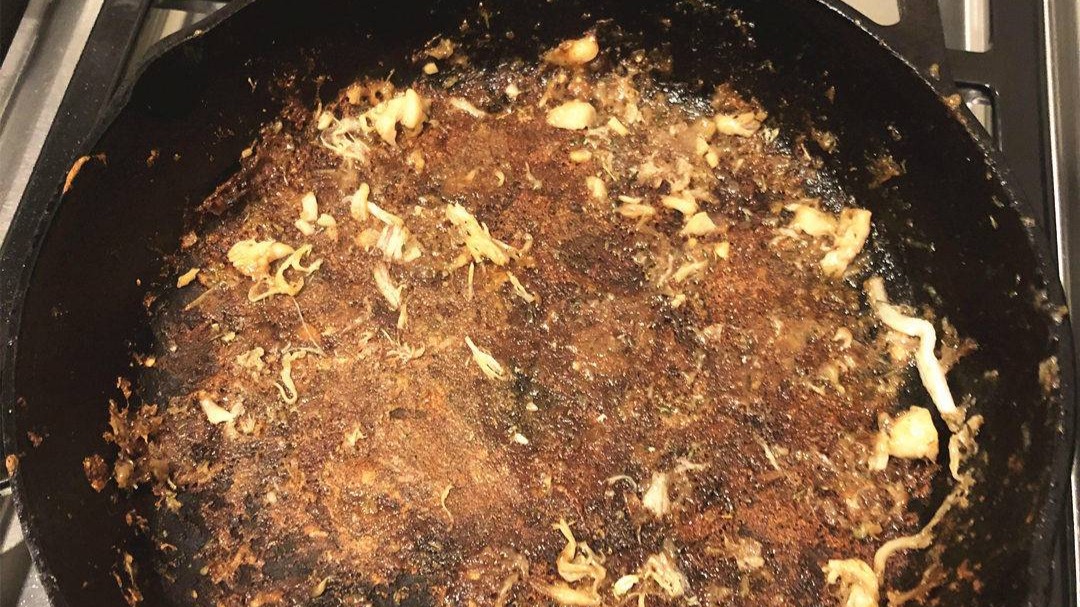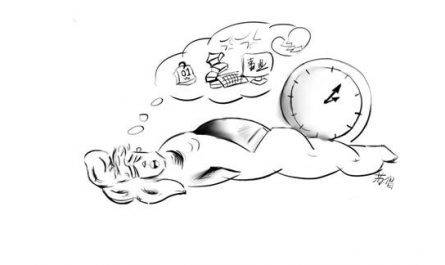Speaking of cooking, many people will encounter a thorny problem that some dishes tend to stick to the pan, especially fried meat, fish, fried tofu, etc. The ingredients sticking to the bottom of the pan can make you crazy. For the same dish, the chefs in the restaurant can do it all in color, flavor and shape. How do they do it without using non-stick pans and keeping the dishes from sticking to the pan?
Frying fish without breaking the skin is a technical task
In fact, cooking is still a scientific problem in the final analysis. You need to understand scientific principles and master scientific methods in order to cook well.
Why do some dishes stick to the pan?
I have never heard of anyone who fries green vegetables that stick to the pan, but when fried meat, fried fish, fried steak and fried tofu, it is easy to stick firmly to the bottom of the pan. You can’t shovel it until it is burnt. This is because of protein. And carbohydrates.
The bottom of our pot looks very smooth, but when you look at it with a microscope, it is actually bumpy like rolling mountains.
The surface of the pot is actually uneven
Meat, fish and soy products have a lot of protein. When the protein on the surface is heated, they will first dissolve and then penetrate into the cracks at the bottom of the pot. As the temperature continues to rise, the proteins solidify, and their chemical bonds will bind to the bottom of the pot (such as iron atoms). From a microscopic point of view, the force of this combination may be weaker van der Waals force, but because the combination mostly occurs in the pores where the two contact each other, the occlusal area between each other is large, like a nylon hook of a Velcro buckle together, so From a macro point of view, the meat is firmly stuck to the bottom of the pan.
Use oil to solve the problem of sticking pan
Fried food usually does not stick to the pan because the hot oil separates the ingredients from the bottom of the pan. If you have half a pot of 50% to 60% hot oil, the carbohydrates on its surface will have solidified under the high temperature of the oil before the ingredients touch the bottom of the pot, so that when it reaches the bottom of the pot, it will not penetrate into those pores. Inside, it is naturally not easy to stick to the pot.
Artificial non-stick coating
Although the deep-frying method does not stick to the bottom, it consumes oil, and the deep-fried food is not very healthy if you eat too much, so everyone uses it less frequently. We Chinese, we mainly like to stir-fry and buy all kinds of woks.
After the new wok is bought, an experienced person will teach you how to “cook the wok” and then how to “keep the wok”, saying that cooking with a cooked wok will not stick. What is the reason for this?
Boiling
The general procedure for boiling the pot is as follows: first wash the pot, dry it on the fire until it is red or “blue”, then rub the hot surface with oily pigskin repeatedly until the pot is black and shiny, and then use water Wash (do not use detergent), and finish boiling.
The process of boiling is actually artificially creating a “non-stick coating”. When the pot burns red on the fire, the iron atoms on its surface will fully react with the oxygen in the air to form black ferroferric oxide. When the iron oxide completely covers the surface of the iron, it will no longer easily generate ferroferric oxide. This is what we often call rust. At this time, use pigskin to rub on the surface of the pot while it is hot. The grease will penetrate into the gaps and pores of the metal surface and coke and solidify at high temperature, just like a protective film is covered on the surface of metal oxide.
There is a layer of oil on the surface of the pan
An opened iron pan was black, shiny and shiny. After the food is put in the pan, protein and starch and other carbohydrates cannot form a bond with the metal below due to the isolation of the coking oil film, so it is not easy to stick to the pan. But this kind of pot should not be scrubbed with dish soap after you have used it, nor is it suitable for long time cooking. If the oil film is washed off, it will still stick next time.
Coker wax plays the role of non-stick pan
Lao Zhou still has doubts about greasy iron pans, and his family still uses detergent every time they wash the pan, so the protective film after the pan is always gone. How can we make stir-fried vegetables not sticky? At this time, another trick is needed: hot pot and cold oil.
Before putting the vegetables in the pot, burn the pot over the stove until the surface of the pot starts to smoke, then pour it into the pan with cold oil, then quickly put the vegetables and stir-fry on high heat so that they will not stick to the pan. This trick is used every time, and it has been tried and tested. What is the scientific truth?
When the temperature of the pot exceeds 193℃, the water droplets will bounce and make a hissing sound. As the time of contact with the surface of the pot becomes shorter, the water evaporates more slowly. This phenomenon is called the Leidenfrost effect. Should (Leidenfrost effect).
The Leidenfrost effect is a peculiar physical phenomenon, we see it more frequently in the kitchen, you only need to heat the pot very hot, and then drop some water into it to see the water beads dancing happily in the pot. .
The main reason for this phenomenon is that water quickly vaporizes into water vapor on the hot surface, and the water droplets have surface tension. In this way, the water vapor in the lower part of the pot that touches the pot will hold up the entire water droplet, thereby forming an air cushion that separates the water droplets from the hot surface.
Water droplets jump up as the temperature rises
The Leidenfrost effect is not only common in the kitchen, it can also bring us many amazing and magical moves. Those who like to travel will have seen a “volcano” performance barefoot in the Yunnan-Guizhou area. The performers will run barefoot over the red-burning charcoal pile, but they will not be burned.
You may have seen the uncle who took the hot red briquettes out of the stove with their bare hands, and the foreigners who inserted their fingers into the molten lead water and took them out. You must know that the melting point of lead is higher than 327℃, which is much hotter than oil. At such a high temperature, he would definitely get burned, but he was safe and sound.
Insert molten lead water
The best one, he squatted by the iron-making furnace several times to slap the molten iron with his bare hands, but his hands withstood the test of the high temperature of 1540℃.
Slap molten iron
All of this can be done not because they have really cultivated the immortality of King Kong, but because they are protected by water. Whether it is a charcoal fire, briquettes or molten iron performer, their feet and hands are kept wet. In this way, when it comes into contact with hot objects, the water will first form a protective film on the surface of the skin due to the Leidenfrost effect. The evaporated water vapor separates the skin from the heat source, thereby protecting them from being burned.
As long as you believe in science, have enough courage, and move quickly, you can do it. Of course, I don’t recommend you to try it.
Back to the topic of cooking
When we put the food in the hot iron pan, the water on its surface will instantly evaporate due to the heat, resulting in the Leidenfrost effect. However, the moisture on the surface of the food is limited, and it will still stick to the surface of the pot before the protein is completely solidified.
At this time, we still need the oil to act as an isolation in the middle. The oil and water are mixed to “hold up” the food. At the same time, the hot oil droplets are responsible for transferring heat energy and making the heated surface more uniform. When the water vapor evaporates, the protein is also completed. Solidification and coking will naturally not stick to the pot!






